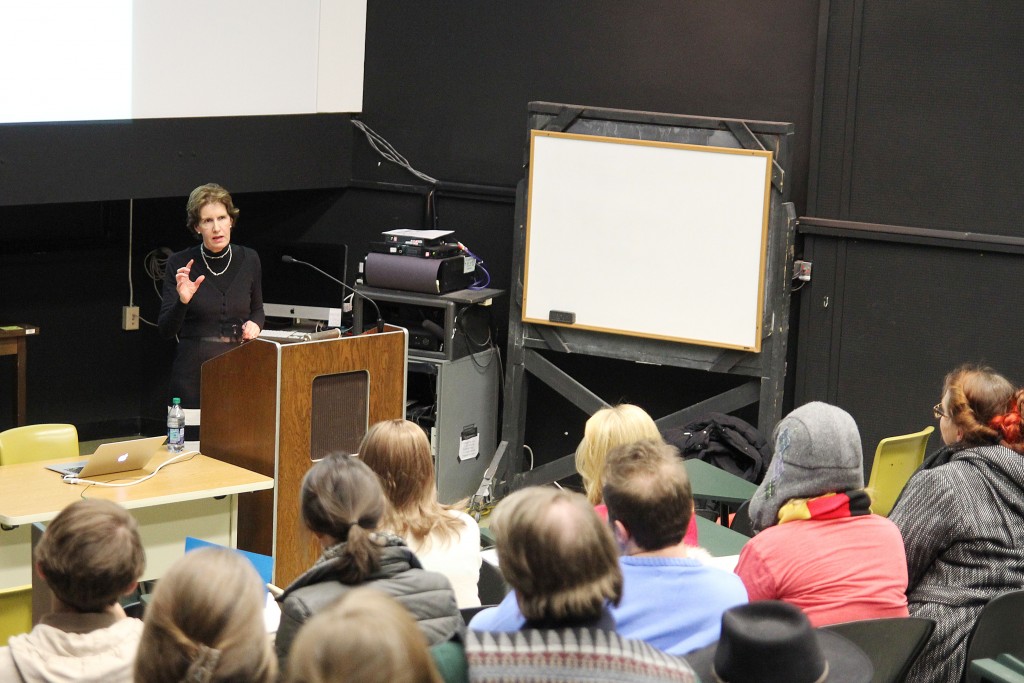
Offering an untraditional look at anthropology, Susanne Küchler gave students and faculty at Binghamton University a picture of the complexities found in Polynesian artifacts.
Küchler, a professor of anthropology at University College London, specializes in material culture. Studying materials requires evaluating cultural artifacts to find the innovative technology hidden within the pieces of work. On Thursday night in Lecture Hall 6, she spoke to over 50 students and faculty members about Pacific Islands and Polynesian culture as part of the Transdisciplinary Areas of Excellence program.
She said that many artifacts in Polynesia had dual meanings and, while most scholars focus on the artifacts themselves, she is mainly concerned with the materials that were used in them. Küchler focused on quilts which were created in Polynesian culture, and the processes by which they were made.
These quilts are made competitively between villages and islands, and women would make them in addition to their normal jobs. An essential part of Cook Island society, the quilts symbolized the circle of life: they were a young women’s induction into adulthood, and they were often buried with people when they died. This symbolism made making the intricate quilts competitive, as they would signify a high societal position.
“These women are stitching every single second of the day, which is very interesting because to untrained eyes, there is nothing remarkable about the quilts,” Küchler said. ”The quilts, however, require at least three people to handle.”
Küchler also said that the quilts are a necessity in Polynesian countries. Sometimes they are placed over the grave of someone who has passed, and most houses have several. She explained that the sewing of these quilts requires a great amount of skill and geometric knowledge.
“When sewing, the women keep the number series in their mind and give a color for each number,” Küchler said. “The geometry helps them create a mental image when sewing. They have to hold the thread exactly with the same strength, and that is actually very difficult.”
She also showed drawings and artifacts that incorporated geometric patterns, such as Micronesian navigation stick charts. The Polynesian natives would use sticks to create charts that symbolized different ocean patterns which helped them navigate the Pacific Ocean by canoes.
Pamela Smart, the chair of the Material and Visual Worlds committee at BU and a professor of anthropology and art history, said that she was excited to have Küchler present because she looked at artifacts differently than most anthropologists. According to her, Küchler examines the artifacts themselves, opposed to the impact the artifacts have on the people and the society.
“Professor Küchler’s work is really concerned with thinking about materials themselves and materials as related to people and thinking of them not as signs of something else, but as materials that participate really actively in social relations and crafting sensibilities,” Smart said. “It’s about thinking about the form of things themselves rather than their meaning and representational character.”
Trish Markert, a member of the Material and Visual Worlds working group and a first year graduate student studying anthropology, said that she enjoyed the talk and could relate the Cook Island quilts to how most cultures build identities.
“I thought it was really interesting,” Markert said. “I’m actually interested in the same things, materiality, identity, things like that — we’re constantly collecting things around ourselves and creating a community that way. I’m looking forward to more conversations with her, and I was really excited for her to come.”


